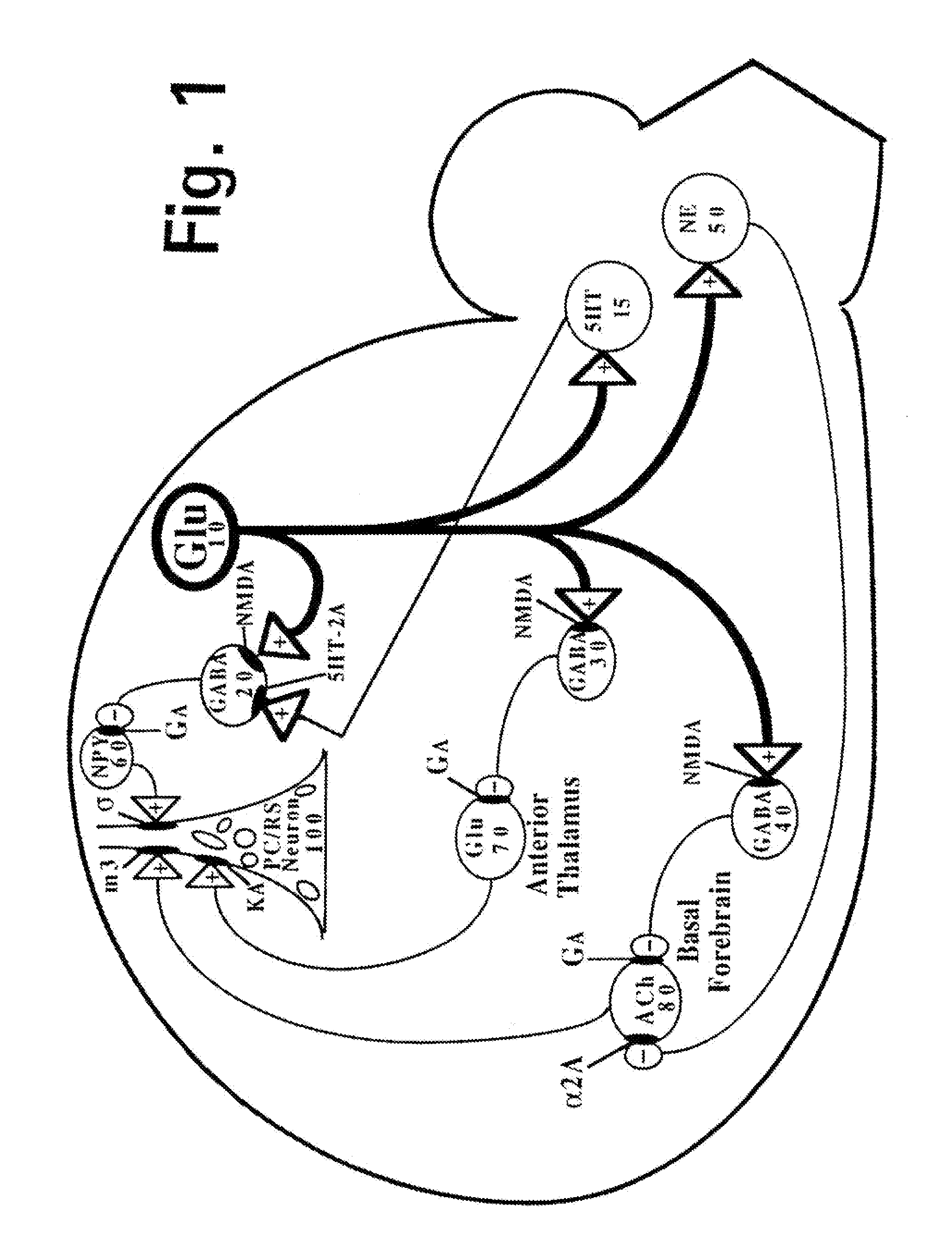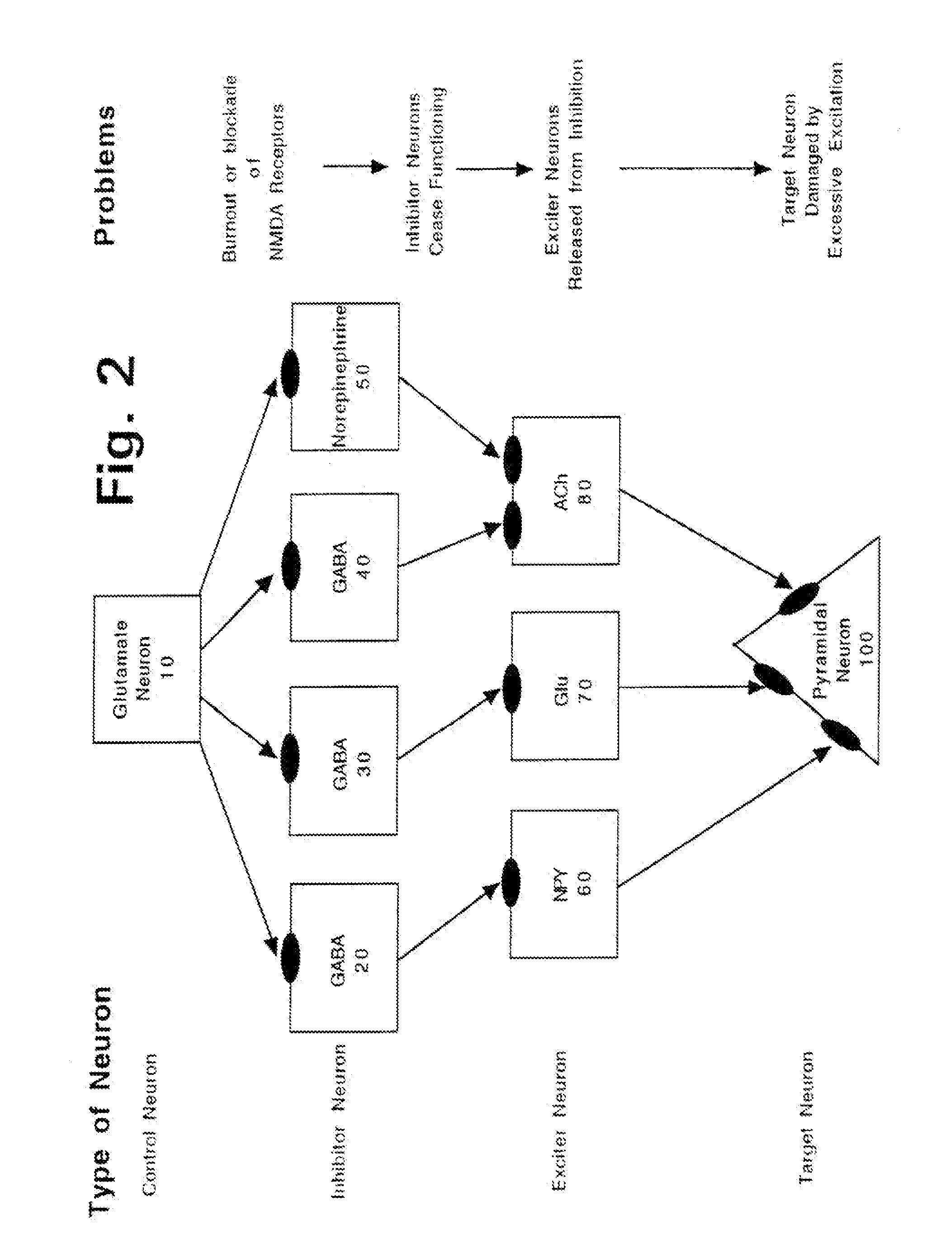Safener drug combinations for use with NMDA antagonist drugs
a safener drug and nmda receptor technology, applied in the field of neurology, can solve the problems of prolonged drug-induced suppression, nmda receptor activity, and a severe and unacceptable risk of permanent neurotoxic brain damag
- Summary
- Abstract
- Description
- Claims
- Application Information
AI Technical Summary
Benefits of technology
Problems solved by technology
Method used
Image
Examples
Embodiment Construction
[0296]As briefly summarized above, this invention discloses combinations and mixtures of certain types of drugs, referred to herein as “safener drugs” since they will be used to reduce and prevent certain unwanted and apparently toxic side effects that otherwise would be caused by one or more other drugs.
[0297]In this invention, the “primary” drug is an NMDA antagonist, such as ketamine. When used for only brief periods of time (such as for anesthesia during surgery), and when used in conjunction with an anxiolytic or sedative drug (which is conventional practice, to minimize the side effects known as “ketamine emergence reactions”), ketamine is relatively safe. However, ketamine and other NMDA antagonist drugs offer potentially huge medical and therapeutic benefits, if they can be administered in substantially higher dosages, up to and including dosage and duration combinations that can allow a human central nervous system to effectively “reset” NMDA receptors that have become hype...
PUM
| Property | Measurement | Unit |
|---|---|---|
| time | aaaaa | aaaaa |
| weight | aaaaa | aaaaa |
| thickness | aaaaa | aaaaa |
Abstract
Description
Claims
Application Information
 Login to View More
Login to View More - R&D
- Intellectual Property
- Life Sciences
- Materials
- Tech Scout
- Unparalleled Data Quality
- Higher Quality Content
- 60% Fewer Hallucinations
Browse by: Latest US Patents, China's latest patents, Technical Efficacy Thesaurus, Application Domain, Technology Topic, Popular Technical Reports.
© 2025 PatSnap. All rights reserved.Legal|Privacy policy|Modern Slavery Act Transparency Statement|Sitemap|About US| Contact US: help@patsnap.com



